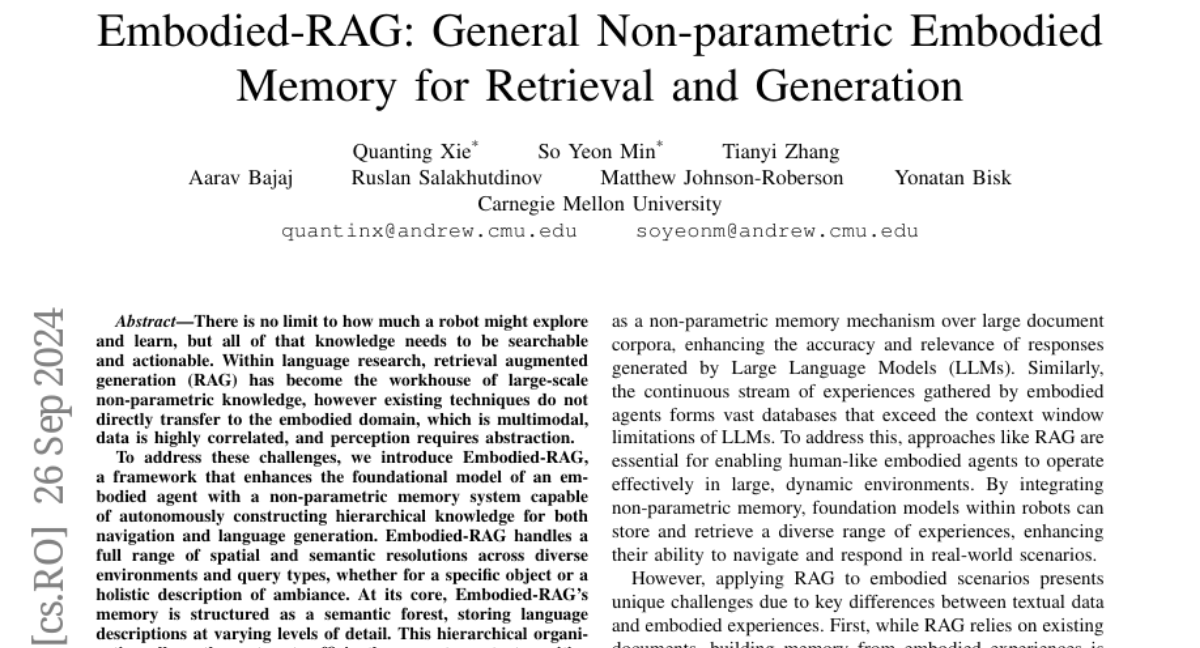Embodied-RAG: General non-parametric Embodied Memory for Retrieval and Generation
Quanting Xie, So Yeon Min, Tianyi Zhang, Aarav Bajaj, Ruslan Salakhutdinov, Matthew Johnson-Roberson, Yonatan Bisk
2024-10-02

Summary
This paper introduces Embodied-RAG, a new framework that helps robots understand and remember information from their environment, allowing them to navigate and respond to commands more effectively.
What's the problem?
Robots can learn a lot from their surroundings, but they need a way to organize and retrieve that knowledge efficiently. Traditional methods for managing knowledge in robots often don't work well in real-world situations where data is complex and interconnected, making it hard for robots to understand and respond to tasks accurately.
What's the solution?
Embodied-RAG solves this problem by creating a non-parametric memory system that organizes knowledge in a hierarchical structure called a semantic forest. This structure allows robots to store information at different levels of detail, making it easier to access relevant information based on the task at hand. The framework can handle various types of queries, whether they require specific object retrieval or general descriptions of the environment. It has been tested across multiple environments and successfully managed over 200 different tasks.
Why it matters?
This research is important because it enhances the capabilities of robots to operate in complex environments, making them more effective in tasks like navigation and communication. By improving how robots remember and retrieve information, Embodied-RAG paves the way for smarter robotic systems that can assist humans in various settings, such as homes, offices, and public spaces.
Abstract
There is no limit to how much a robot might explore and learn, but all of that knowledge needs to be searchable and actionable. Within language research, retrieval augmented generation (RAG) has become the workhouse of large-scale non-parametric knowledge, however existing techniques do not directly transfer to the embodied domain, which is multimodal, data is highly correlated, and perception requires abstraction. To address these challenges, we introduce Embodied-RAG, a framework that enhances the foundational model of an embodied agent with a non-parametric memory system capable of autonomously constructing hierarchical knowledge for both navigation and language generation. Embodied-RAG handles a full range of spatial and semantic resolutions across diverse environments and query types, whether for a specific object or a holistic description of ambiance. At its core, Embodied-RAG's memory is structured as a semantic forest, storing language descriptions at varying levels of detail. This hierarchical organization allows the system to efficiently generate context-sensitive outputs across different robotic platforms. We demonstrate that Embodied-RAG effectively bridges RAG to the robotics domain, successfully handling over 200 explanation and navigation queries across 19 environments, highlighting its promise for general-purpose non-parametric system for embodied agents.